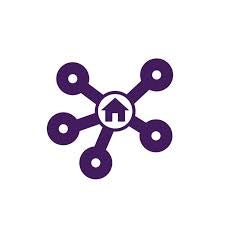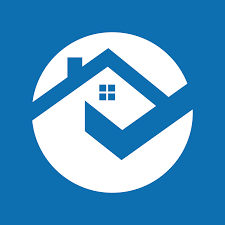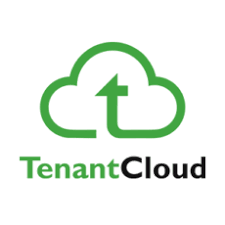The best property management software with accounting integration includes key features like owner statements, CAM
fee reconciliation, and property-level reporting. I evaluated the platforms below based on the quality of their accounting integrations, whether they support two-way data syncing, and how smoothly they connect with existing financial systems. I also considered whether they’re supported by verified app marketplaces or partner directories.
Why you can trust TechRepublic
At TechRepublic, we publish high-quality, independently researched articles created by writers who are experts in the fields they cover. Our contributors include seasoned IT professionals, certified accountants, software developers, and industry consultants — people who have worked directly with the tools they evaluate. Every article is built on firsthand experience, in-depth testing, and a deep understanding of what businesses and tech teams actually need to make confident, informed decisions.
Comparison of the best accounting software for property management
| Buildium | |||||
| STRATAFOLIO | |||||
| REI Hub | |||||
| RentRedi | |||||
| TenantCloud |
Buildium: Best overall pick

My rating: 4.4 out of 5 points
Buildium offers the most balanced mix of property management and accounting features without overcomplicating the experience. It handles everything from tenant communication to financial reporting in a single platform, which reduces the need for workarounds or third-party tools.
For anyone managing multiple properties, especially residential units, it strikes the right balance between usability and depth. It’s not just capable — it’s dependable, which is exactly what I look for in the best accounting software for property management. However, TenantCloud, which is similar to Buildium, has the advantage when it comes to affordability and flexibility for individual landlords, especially those managing just a few units.
Pricing
- Essential: Starting at $58 per month
- Growth: Starting at $183 per month
- Premium: Starting at $375 per month
My evaluation
Buildium performed consistently well across all three parts of my assessment. It aced key areas like rent collection, financial reporting, maintenance tracking, and tenant portal access. The interface is intuitive, the setup is smooth, and customer support is responsive and well-documented.
The only area where it took a hit was owner distributions. While reports are solid, Buildium lacks fully automated ACH or check-based distribution workflows, which cost it points in both accounting and operational criteria. It also doesn’t offer direct access to certified bookkeepers, which limited its bookkeeping support score. That said, as a complete property management accounting software solution, Buildium remains one of the most well-rounded tools available.
Pros and cons
| Offers strong accounting features built specifically for property management | Lacks automated ACH or check-based owner distributions |
| Features a tenant portal that supports rent payments, maintenance requests, and communications | Requires a minimum of 20 units, which may be a barrier for small landlords |
| Has a clean, intuitive dashboard with solid financial reporting | Doesn’t offer access to in-house bookkeepers or dedicated accounting experts |
| Provides reliable customer support with onboarding and help resources |
STRATAFOLIO: Best for commercial property management

My rating: 4.3 out of 5 points
Stratafolio is purpose-built for commercial real estate, so I recommend it for managing office, retail, and industrial properties. It handles the complexities of multi-entity ownership, CAM reconciliation, lease escalations, and investor reporting better than most general-purpose platforms. If you’re managing triple net leases or juggling multiple LLCs under one portfolio, this is where Stratafolio shines.
It also integrates directly with QuickBooks, so accounting stays streamlined without duplicating data entry. You get centralized dashboards, automated rent schedules, and robust reporting tools designed specifically for commercial use cases. However, I prefer how RentRedi handles QuickBooks integration because it gives more control over syncing transactions and categorizing property-level data without needing a deep accounting background.
Pricing
- Essential: $150 per month; $2 per additional unit
- Professional: $175 per month; $4 per additional unit
- Enterprise: $210 per month; $6 per additional unit
All plans come with five units.
My evaluation
Stratafolio scored well in the areas that matter most to me for commercial property management. I like how it handles lease escalations, ownership splits, and consolidated reporting — features that are often missing or underdeveloped in more residential-focused platforms. The QuickBooks integration also worked in its favor, especially for landlords who already have their accounting set up there.
That said, I couldn’t award a higher mark for the tenant-side experience. The portal feels limited — tenants can pay rent and submit requests, but they can’t view leases or documents. I also found the lack of automated owner distributions and limited payment options to be drawbacks. And while setup isn’t overly complex, it does take more effort to configure properly because of the QuickBooks connection.
Pros and cons
| Is designed specifically for commercial property management | Includes only five units by default in all plans, even the highest tier |
| Handles CAM reconciliation, lease escalations, and investor reporting | Relies on QuickBooks for core accounting functionality |
| Works with both QuickBooks Desktop and QuickBooks Online | Has a tenant portal that lacks document access and robust communication tools |
| Features strong multi-entity and ownership tracking | |
| Has centralized dashboards and real-time financial insights |
REI Hub: Best for inexpensive property management

My rating: 3.2 out of 5 points
I like REI Hub because it’s tailored for real estate investors who want accurate, property-level financials without overspending. It is prebuilt with a real estate chart of accounts, supports Schedule E reporting, and includes rental-specific templates for transactions like security deposits and mortgage payments. That makes REI Hub a smart pick for anyone looking for the best accounting software for property management that stays focused on bookkeeping without paying for tools they won’t use.
That said, if you’re growing into full-scale property management with multiple units, maintenance coordination, and tenant communications, you’ll likely outgrow REI Hub. That’s where platforms like Buildium come in. Buildium offers broader functionality for landlords who need more than just accounting, making it a natural next step as your portfolio expands.
Pricing
- Up to 3 units: $15 per month
- Up to 10 units: $25 per month
- Up to 20 units: $45 per month
- Unlimited units: $80 per month
My evaluation
I gave REI Hub a high score for ease of use since it is well-designed, is easy to navigate, and doesn’t get in the way during setup. I also granted additional points for its accounting features. It handles bank reconciliation smoothly, supports double-entry accounting, and offers customizable reporting. While it depends on integrations like QuickBooks for deeper functionality, its financial tools are still solid for users looking to stay organized without extra friction.
That said, I had to dock points heavily when it came to property management. It lacks key features like tenant portals, lease management, maintenance tracking, and vacancy tools. I also couldn’t award a higher mark given the absence of occupancy tax tracking, which is especially important for short-term rentals. Overall, my score reflects a platform that works well for accounting but falls short as a comprehensive property management solution.
Pros and cons
| Is designed specifically for real estate investors with a property-by-property accounting structure | Lacks core property management features like tenant portals, maintenance tracking, and lease automation |
| Is preconfigured for Schedule E reporting with a real estate-focused chart of accounts | Has no built-in general ledger; relies on QuickBooks for deeper accounting functions |
| Includes rental-specific transaction templates for security deposits and mortgage splits. | Does not support occupancy tax tracking or compliance features. |
| Is easy to use, with an intuitive dashboard, smooth setup process, and responsive support | Offers limited owner reporting and distribution automation (manual processes required) |
| Lacks tools for listing vacancies, managing applications, or scheduling showings |
RentRedi: Best for QuickBooks integration

My rating: 4.0 out of 5 points
RentRedi offers one of the cleanest QuickBooks Online integrations among all the options I looked at. Payments recorded in RentRedi flow directly into QuickBooks, eliminating the need to export or reconcile data manually.
The tool is designed to reduce friction for landlords who already manage their books in QuickBooks, making it an ideal choice for those seeking the best accounting software for property management that works seamlessly with a trusted accounting system. Other platforms offer integrations, but RentRedi does this with less effort, with fewer sync issues, and without requiring a separate add-on or connector.
That said, if you’re managing commercial spaces or complex ownership structures, Stratafolio is the better pick. Its QuickBooks integration is built with those use cases in mind, such as handling CAM reconciliation, lease escalations, and investor reporting that go beyond what RentRedi is designed to support.
Pricing
- Standard
- Monthly: $29.95
- Six months: $20 per month
- Annual: $12 per month
- Premium: $42 a month, billed annually
My evaluation
RentRedi stands out as a well-balanced option in the property management accounting software space, especially for landlords looking to streamline their financial workflows through QuickBooks. I gave it credit for having an easy setup, a clean interface, and a responsive support team. It also performed well in core property management functions like rent collection, maintenance tracking, and tenant communications. The tenant portal is fully functional and mobile-friendly, making it more usable daily.
It took a hit in areas that rely too heavily on QuickBooks to function. There’s no true general ledger or native accounts payable module — those tasks are pushed into QuickBooks, which limits RentRedi’s independence as a standalone accounting software for property management. Still, for users already in the QuickBooks ecosystem, this is one of the few platforms that connects well without excessive configuration. That integration efficiency gives it an edge over others on this list.
Pros and cons
| Is designed specifically for landlords and property managers | Lacks a free trial |
| Provides a user-friendly mobile app. | Charges transaction fees that apply to tenant payments |
| Includes a centralized platform for tenant communication and document storage, enhancing accessibility and organization | May not provide the comprehensive accounting functionalities found in dedicated accounting software |
TenantCloud: Best for residential property management

My rating: 3.9 out of 5 points
TenantCloud is built for residential landlords needing an easy-to-use and affordable all-in-one solution. It covers the essentials — such as tenant screening, lease management, online rent collection, and maintenance requests — without requiring extra add-ons or integrations.
For anyone managing apartments, single-family homes, or small multifamily units, it delivers exactly what you need out of the box. That’s why I see it as a standout option among the best accounting software for property management, especially when residential workflows are the priority.
If you find yourself needing more advanced accounting, more granular reporting, or automated owner distributions, Buildium is the next step. It’s built for landlords with larger portfolios who need greater depth in both financial tracking and property operations.
Pricing
TenantCloud is custom-priced. Contact sales for details.
My evaluation
I gave TenantCloud solid marks for offering property management features that work well for residential landlords. It covers tenant screening, lease management, rent collection, and maintenance tracking in one platform, making it a practical choice for managing day-to-day tasks. It also includes a tenant portal with auto-pay options, which adds convenience on both ends. The interface is easy to navigate, and the setup process is smooth, which helped it score well in ease of use.
However, I had to dock points on the accounting side. While it supports basic tracking and reporting, it lacks a true general ledger and doesn’t handle things like detailed bank reconciliation or automated mortgage accounting. It also doesn’t integrate deeply with QuickBooks or offer occupancy tax compliance, limiting its utility for more complex portfolios. Still, it does a lot right for the price and remains reliable for landlords with small portfolios or DIY managers.
Pros and cons
| Offers a full suite of tools tailored for residential property management | Lacks a full general ledger and robust accounting capabilities |
| Includes built-in tenant screening, online rent collection, and lease tracking | Lacks deep integration with QuickBooks for advanced financial management |
| Provides a customizable tenant portal with maintenance request features | Does not support occupancy tax tracking or compliance |
| Supports online listings with syndication to major rental platforms | Offers limited automation for owner distributions and reporting |
| Has a user-friendly interface with smooth setup and navigation | Is better suited for small to midsize portfolios; may not scale well for larger operations |
My methodology
To evaluate the best accounting software for property management, I used a weighted rubric based on five key categories.
- Pricing accounted for 10% of the total score. I assigned subjective ratings based on affordability, transparency, and whether the price included key features or charged extra for essentials. Custom-priced solutions were penalized due to the lack of upfront cost clarity.
- Accounting features carried the most weight at 40%. This category assessed general ledger capability, bank reconciliation, accounts payable and receivable, financial statements, chart of accounts customization, and occupancy tax compliance. Points were awarded based on automation, depth, and how well each tool supports rental-specific workflows.
- Property management tools made up 20% of the score. I evaluated core features such as tenant portals, lease management, maintenance tracking, vacancy listing tools, and owner reporting. Special consideration was given to how well these tools support residential and commercial operations.
- Ease of use and support represented another 20%. I rated user experience based on setup time, dashboard design, availability of customer support, and access to onboarding or accounting guidance.
- User reviews comprised the final 10%, pulling from third-party platforms to reflect actual user satisfaction with performance, reliability, and customer service.
How to choose the best property management accounting software
Look at your existing processes and workflows to ensure that the tool you pick can blend well with your system. Here is my advice.
- Start with your operational pain points. Don’t shop by feature list alone. Identify where your current workflow breaks down — whether it’s collecting rent, reconciling finances, or managing maintenance — and focus on software that solves those problems first.
- Know your property type and what it demands. Residential and commercial properties operate very differently. Residential landlords need streamlined tenant communication, lease automation, and payment reminders. Commercial property owners should prioritize CAM reconciliation, escalations, and support for layered ownership structures.
- Look for accounting software that’s built for property management. True property-centric accounting means your books reflect unit-level performance, not just lumped-together totals. Prioritize systems that automatically track income and expenses by property, split mortgage payments accurately, and are IRS-ready (e.g., Schedule E reporting).
- Don’t settle for “integrates with QuickBooks” — dig deeper. Some platforms just export CSV files, and the better ones offer two-way, real-time syncing with QuickBooks Online. If QuickBooks is the financial backbone of your business, a weak integration will cost you more in manual fixes than it’s worth.
Frequently asked questions (FAQs)
Is QuickBooks good for property management?
QuickBooks can be good for property management, but it’s not designed for it out of the box. To make it work, you’ll need to customize your chart of accounts, track each property separately, and possibly use classes or locations for clarity. Integrating QuickBooks with property management accounting software like STRATAFOLIO or RentRedi can bridge the gap, giving you strong financial tools while handling the operational side with a dedicated platform.
What is the best accounting method for rental property?
The best accounting method for most rental property owners is the cash basis method, especially for small
to midsize portfolios. It is simpler, tracks actual cash inflows and outflows, and aligns with how income is taxed on IRS Schedule E. Large commercial operators or those with more complex ownership structures might benefit from accrual accounting to better match revenue and expenses over time.
How to do accounting for property management?
Start by organizing your books on a property-by-property basis. Track income (e.g., rent and fees), expenses (e.g., repairs and utilities), and liabilities (e.g., security deposits and mortgages) separately for each property or unit. Use software that supports rental-specific transactions, generates financial statements, and syncs with your bank accounts for a clean reconciliation.



